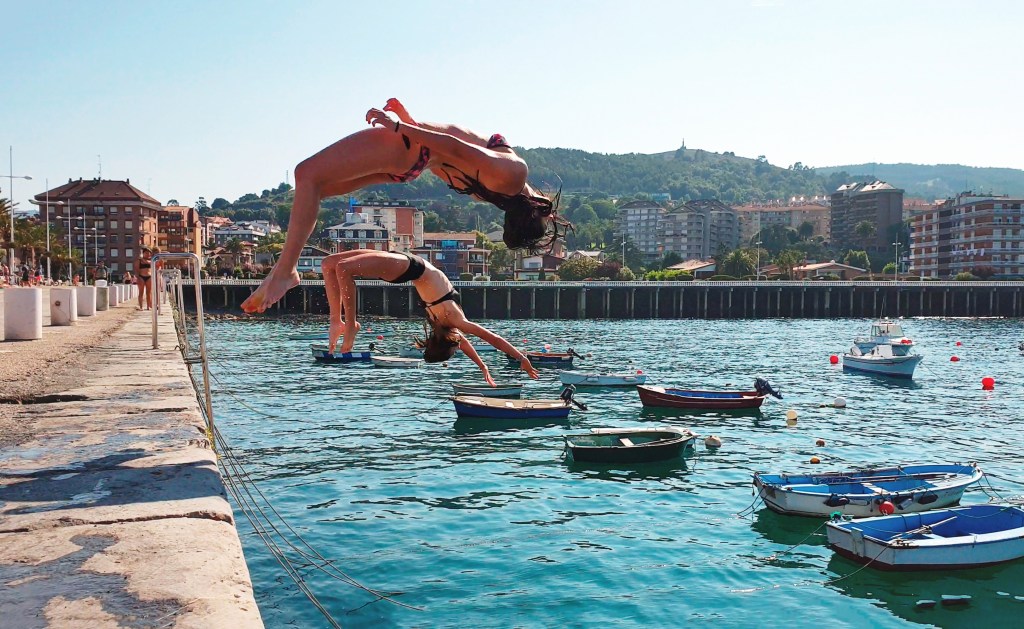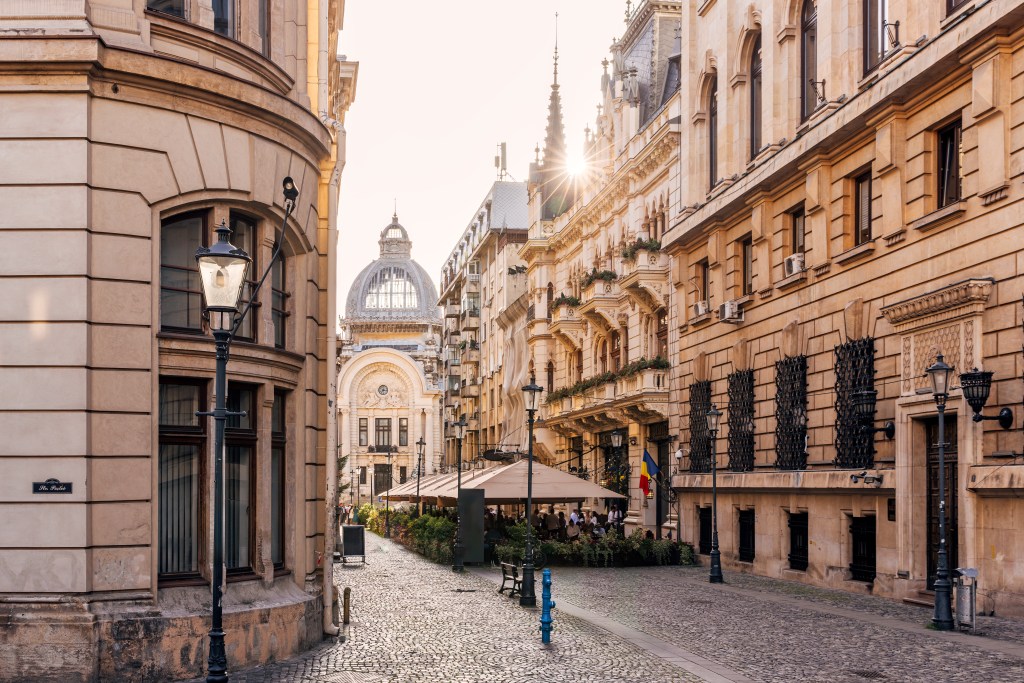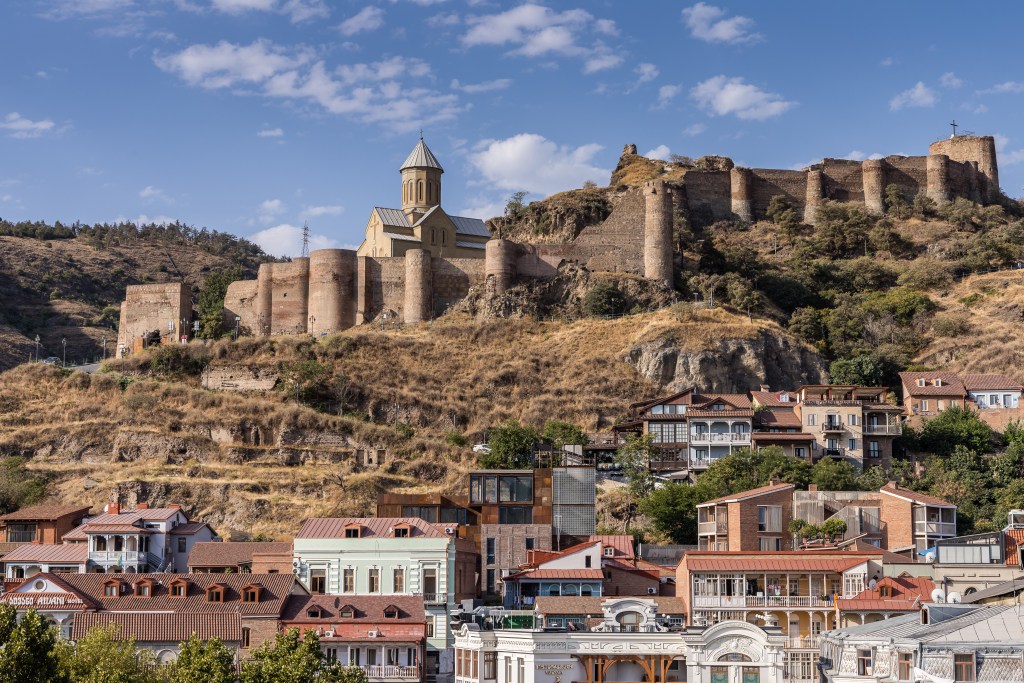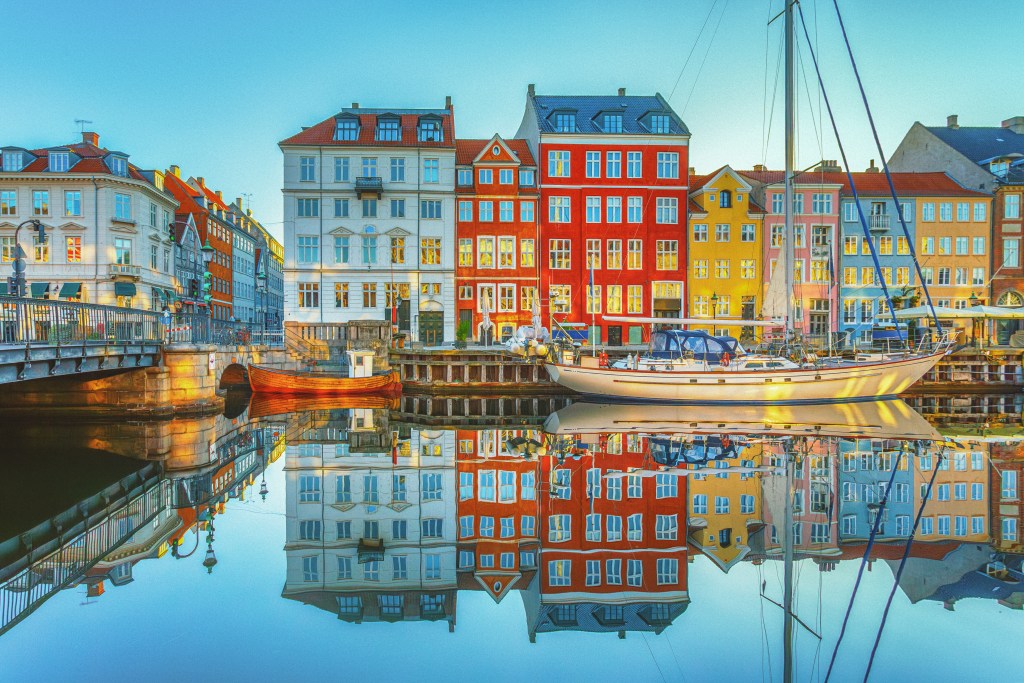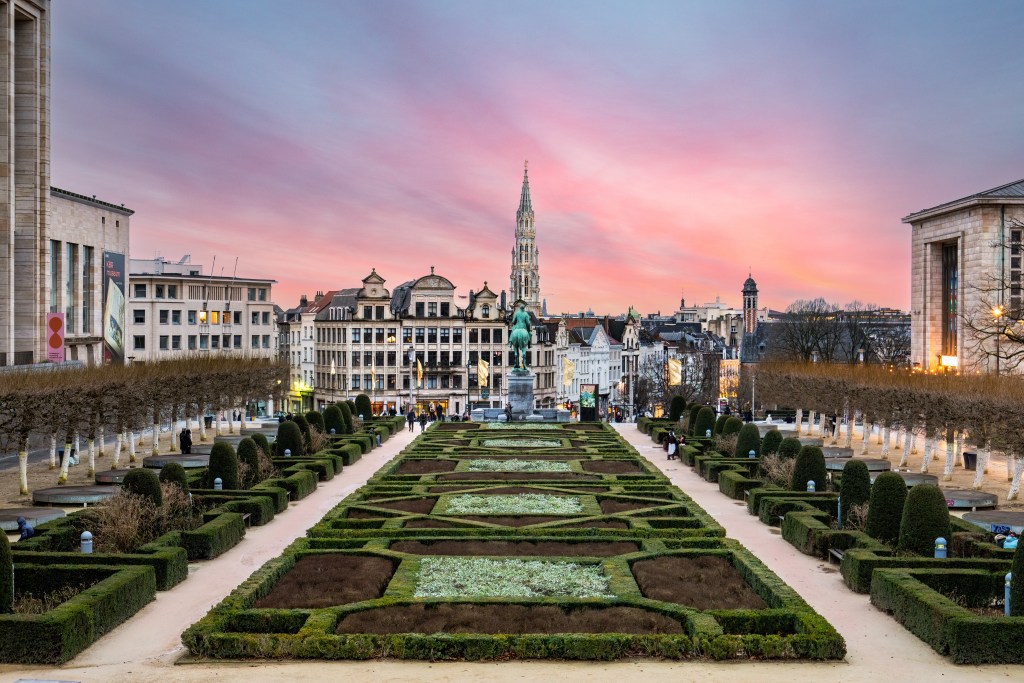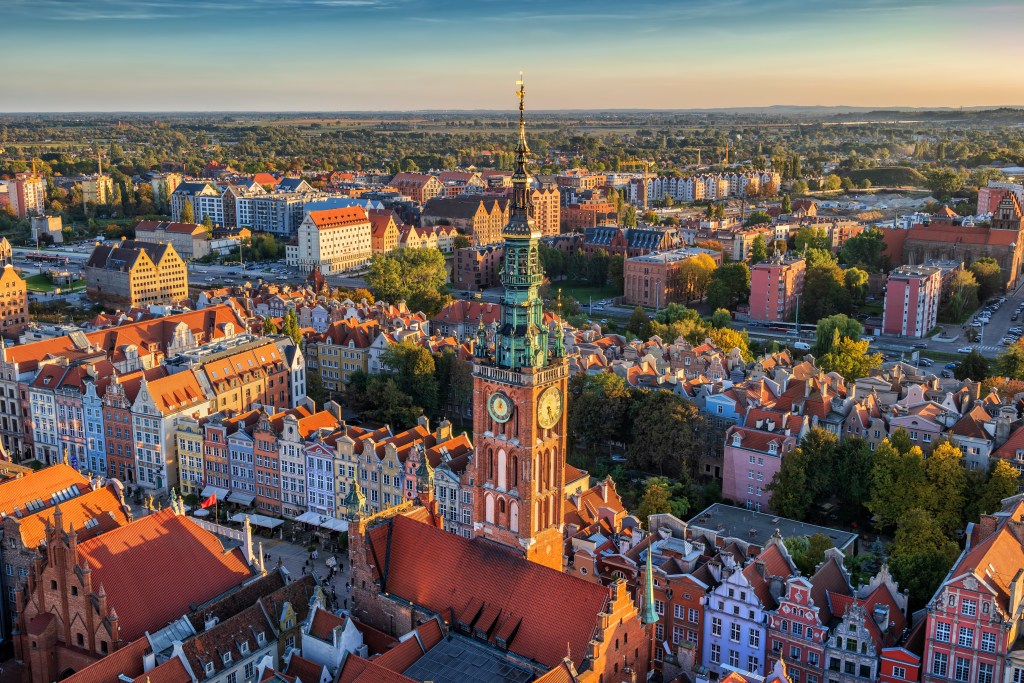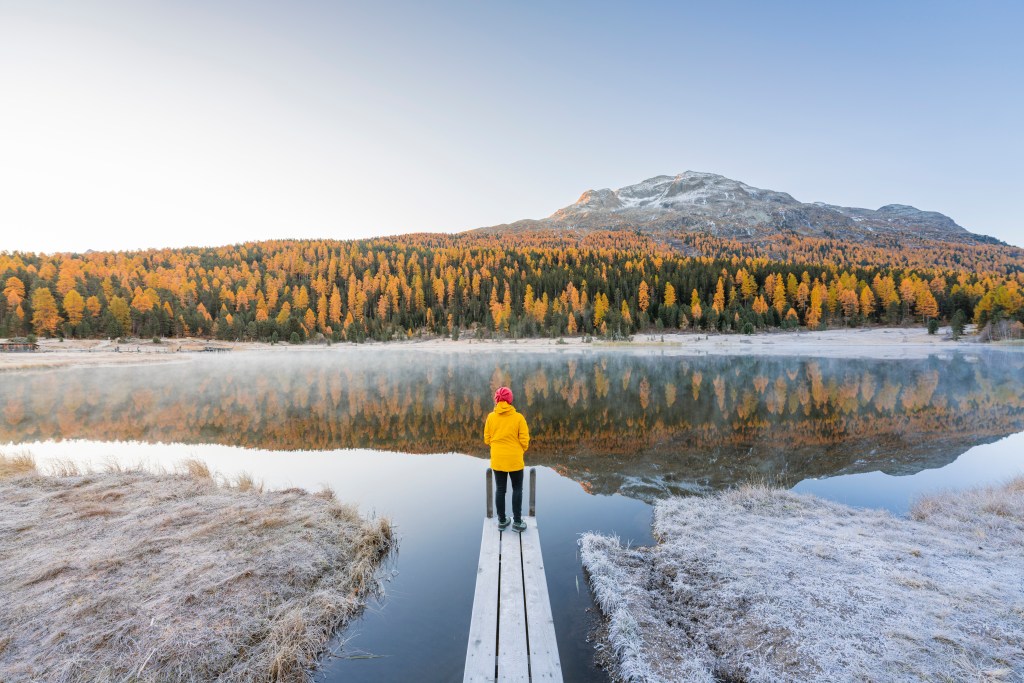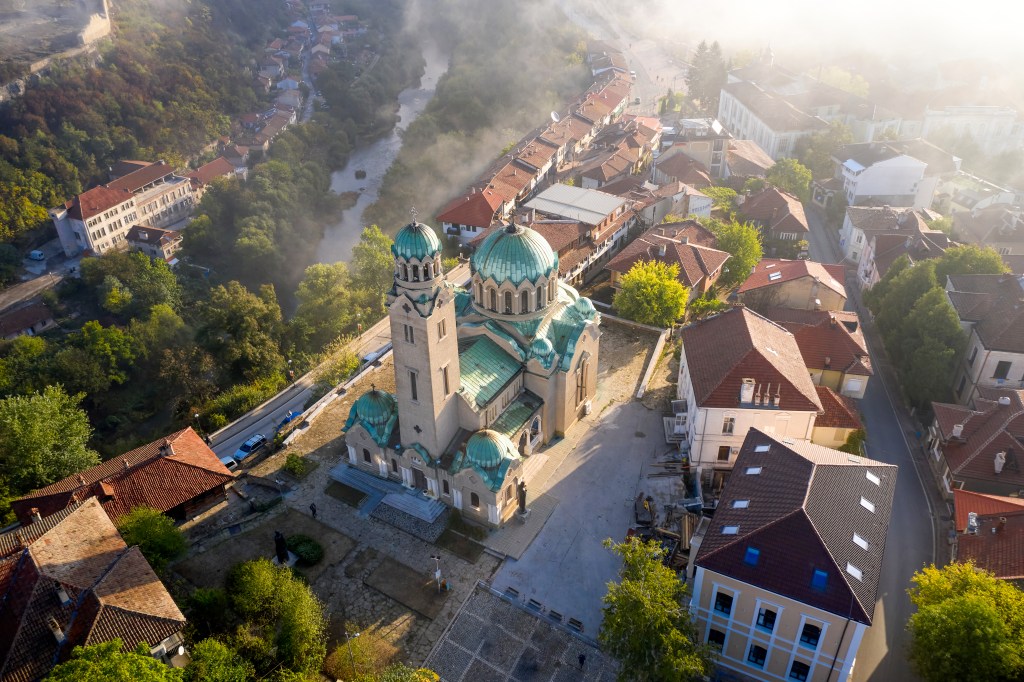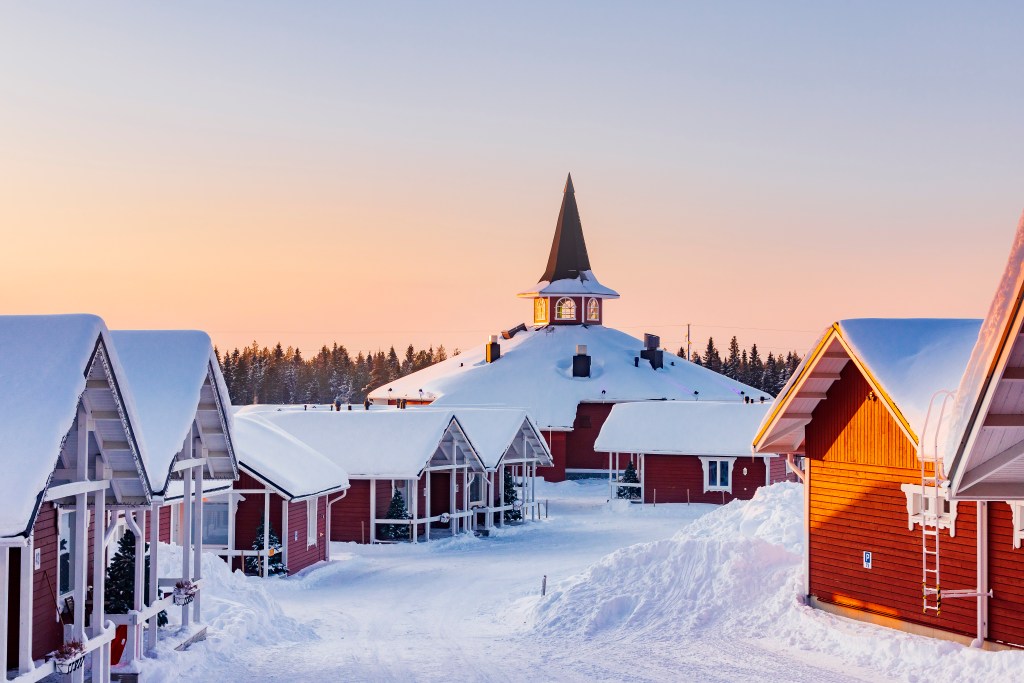In case you didn’t know, Chicago is home to the US’s most impressive architectural feats.
I say that knowing that New York City also has its own list of impressive skyscrapers, that cities like Savannah and New Orleans have impressive colonial structures, and that San Francisco has a balance of many distinct forms, from its Victorian homes to modern business hubs.
But Chicago stands alone when it comes to sheer spectacle, range of projects, and grandiosity.
Even more impressive, its list of innovative, sustainable skyscrapers keeps expanding thanks to new projects like The St. Regis and The Aqua Tower.
And if you’ve been paying attention to my hospitality advice, you know that I always try to book a stay at a hotel or rental that capitalizes on the destination’s overall atmosphere.
In the Windy City, if you want to take a bite out of its lovely architecture, there’s no better way to do so than at one of the many Chicago high-rise apartments spread across the city’s coolest residential skyscrapers.
Forget the architectural tours—as soon as you wake up and roll over, you’ll be treated to an unforgettable bird’s eye view of the city’s top buildings.
Best Chicago high rise apartments on Airbnb that are available for bookings
- Highrise Hideout
- Sonder Onterie
- Kasa Studio
- Kasa 1 Bedroom
- Kasa Large Studio
- The Millenium Manor
- Downtown #4
- High-end 1BR
- Luxury Downtown Chicago
- River North
- Top-Tier Stay
- River North Private Deck
12 coolest Chicago high rise apartments on Airbnb
Highrise Hideout
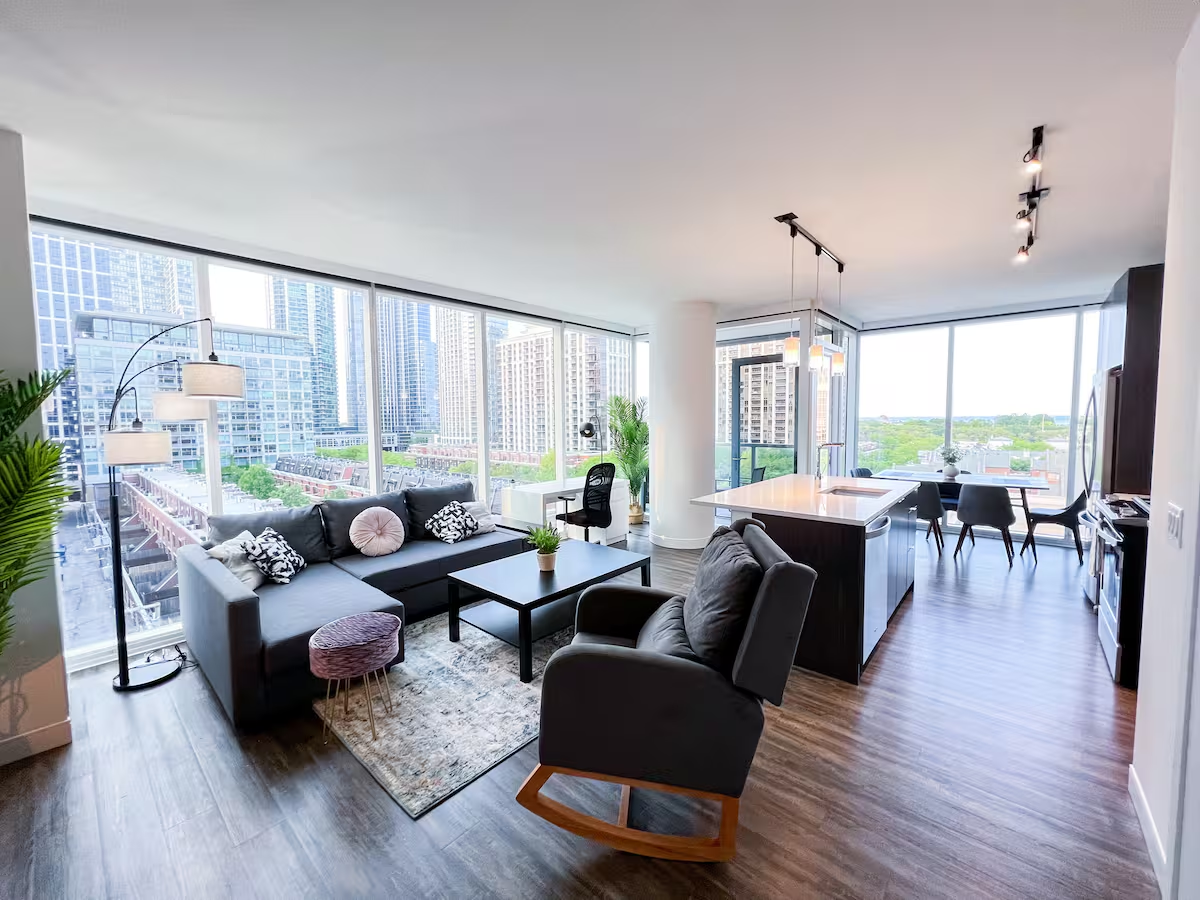
Both chic and cozy, this high-rise lets you take a more homey look at life above the 30th floor. In addition to a gorgeous two-bedroom apartment with floor-to-ceiling windows, you also get perks like a community pool and a swanky fitness center.
Sonder Onterie
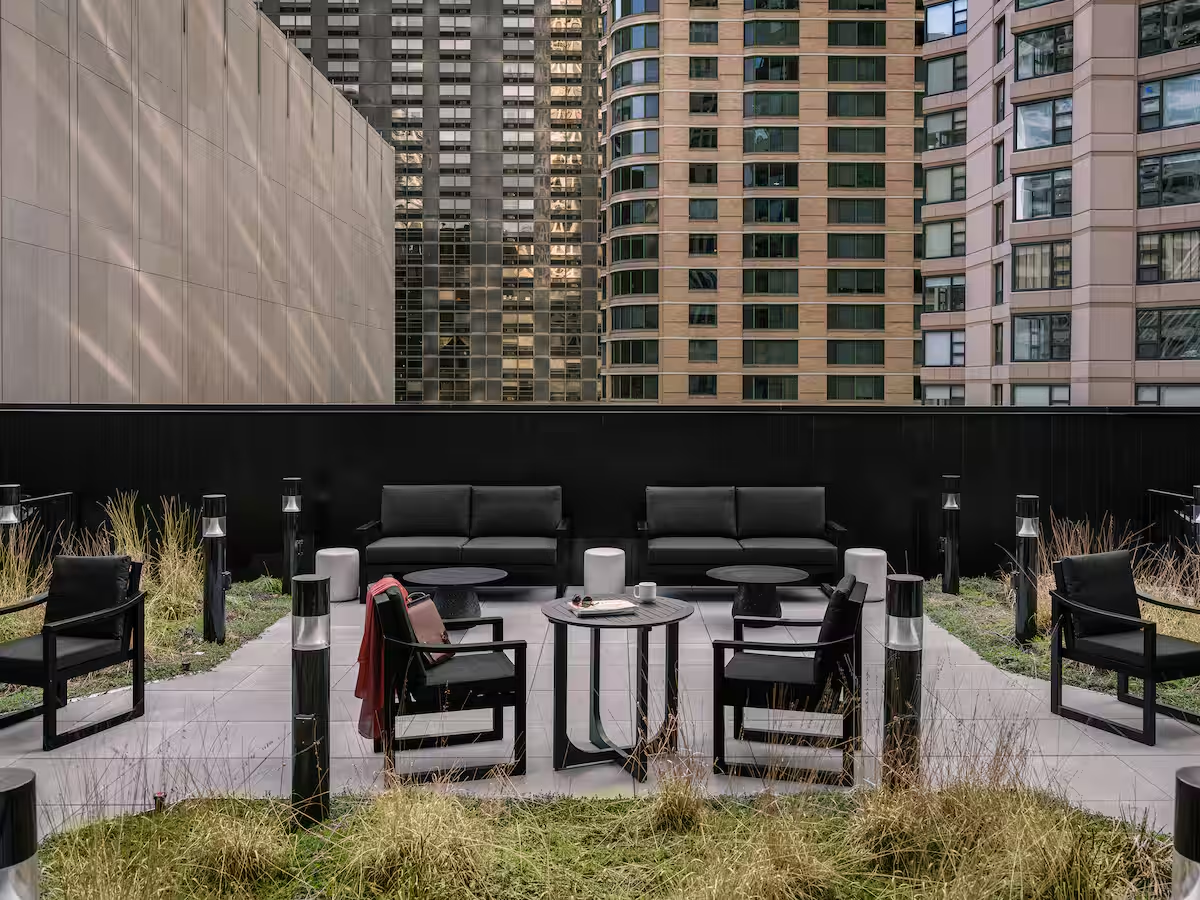
As a Sonder product, this is a hotel rental rather than a traditional Airbnb rental. However, if you’re on the hunt for a high-rise Airbnb that absolutely oozes style, the trade-off is worth it. Not only are you in one of the flashiest buildings on the Magnificent Mile, but you also get those hotel-style perks like 24/7 support and housekeeping services.
Kasa Studio

I’ve got three Kasa rentals listed, which offer a (slightly) more affordable way to stay inside a Chicago high-rise. As with Sonder, you get a few hotel-style amenities thanks to the professional management, including a virtual front desk and a choice between different layouts. Plus, the building’s amenities, including a fitness center, pool, and other communal spaces. If you don’t like the studio, check out their larger studio or their one-bedroom below.
- Kasa Large Studio. If the original studio is too small, consider renting the larger unit. Just know that this is a two-person stay, despite its slightly larger size.
- Kasa 1 Bedroom. This one-bedroom unit lets you sleep three, by contrast. The couch is a pull-out where you can sleep a third.
The Millenium Manor
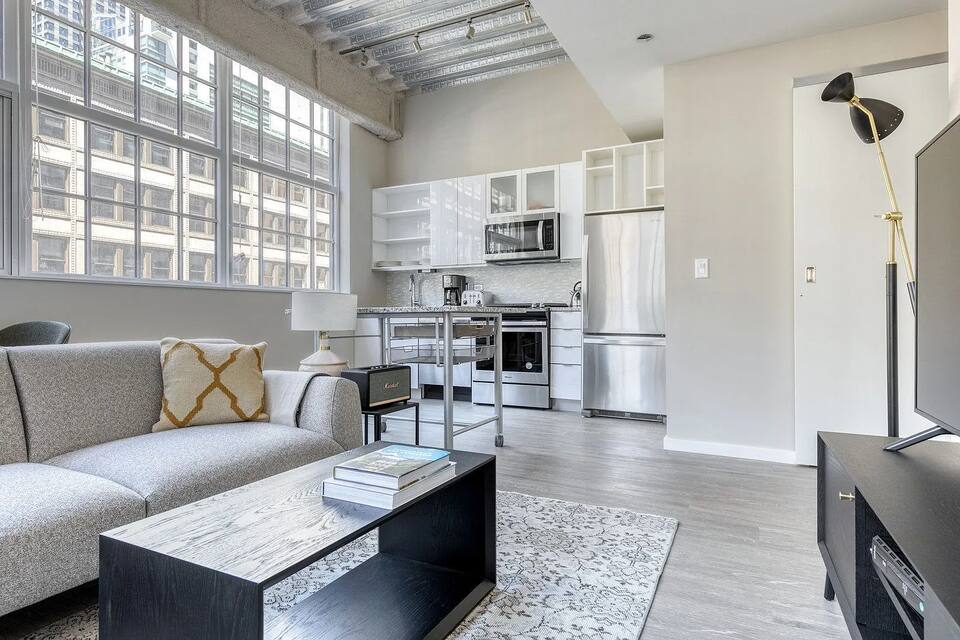
Located smack in the heart of the Loop, this is one of the coolest Chicago high rise apartments on Airbnb at the moment. That’s thanks to the building’s superior offerings. There’s a pool and a fitness center… but there’s also a small, grassy garden, another deck for lounging, a game room, and even a movie theatre. And you can enjoy it all while surrounded by Chicago’s most impressive skyscrapers.
Downtown #4
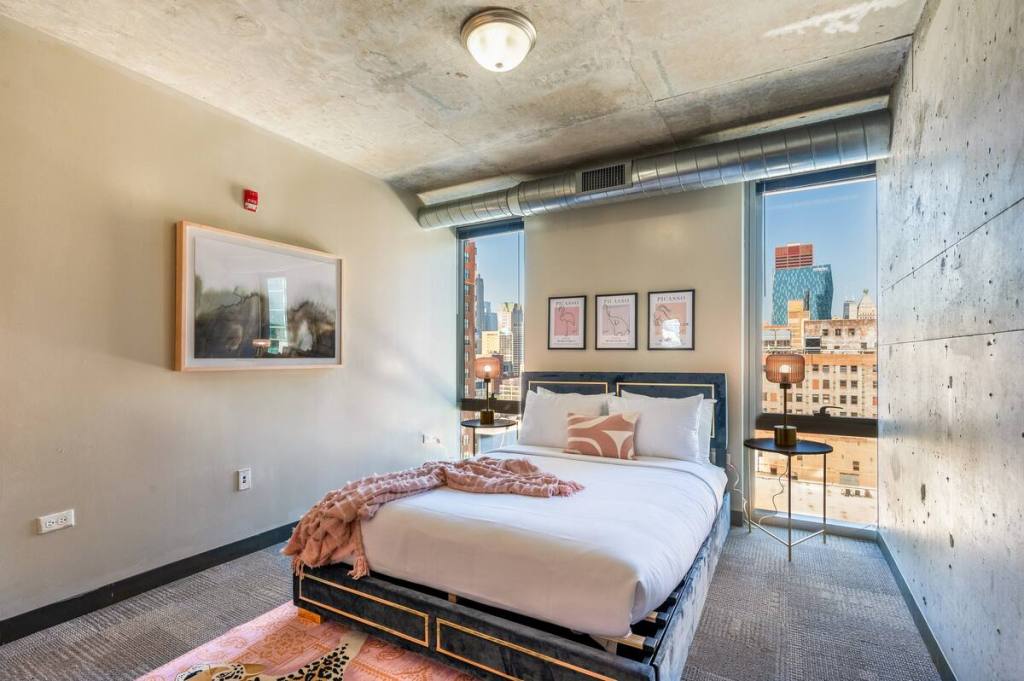
This two-bedroom rental is full of character—you’ll notice that it’s more colorful and spirited than its counterparts. If you’re looking for that type of local flair, then book your stay at Downtown #4. Uniquely, this building is also rented by a local college and is used as a campus. But don’t worry—the young students are housed on a separate floor.
High-end 1BR
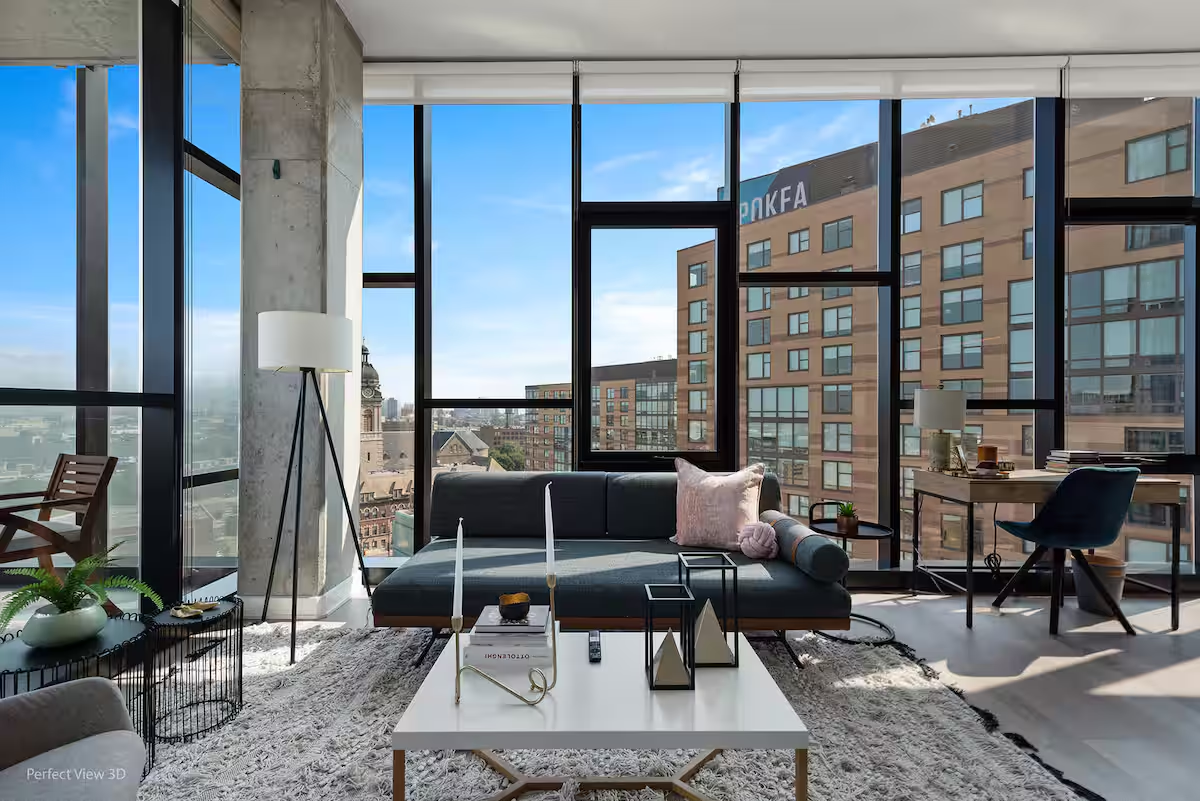
Want to rent a Chicago high rise that delivers on dramatic, modern views? This one-bedroom apartment is easily one of the swankiest on the list. As an added bonus, it comes with a small balcony, letting you really soak up Chicago’s elevated atmosphere. Even inside, the floor-to-ceiling windows make a strong impact.
Luxury Downtown Chicago

Simple, very chic, and with two bedrooms, this luxury downtown unit is slightly more accessible for anyone traveling in a group. The apartment has plenty of space, along with a massive shared roof where you can hang out. Though there’s no pool, there is a large fitness center.
River North

This two-bedroom stay comes with free parking, letting you drive in without worrying about exorbitant garage fees. It also sleeps six, in case you want to save a bit on nightly rates using the pull-out couch. Plus, you also get a shared rooftop with barbecue grills, along with a separate private balcony in-unit.
- River North Private Deck. The same rental management company runs another two-bedroom unit in the same building. This one includes a larger private balcony.
Top-Tier Stay
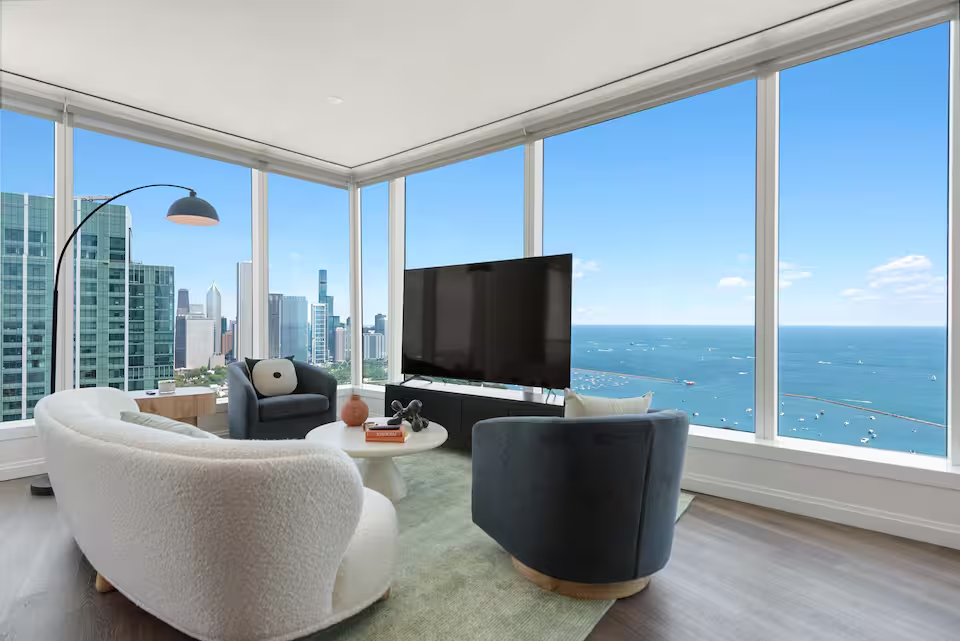
If you’re on the hunt for lake views versus city views, then this rental unit is unbeatable. Located on the 49th floor, you’ve got a bird’s-eye view of the city—and beyond. Its floor-to-ceiling windows showcase Lake Michigan, while the building itself (The Summit) is one of the more modern apartments on this list.
